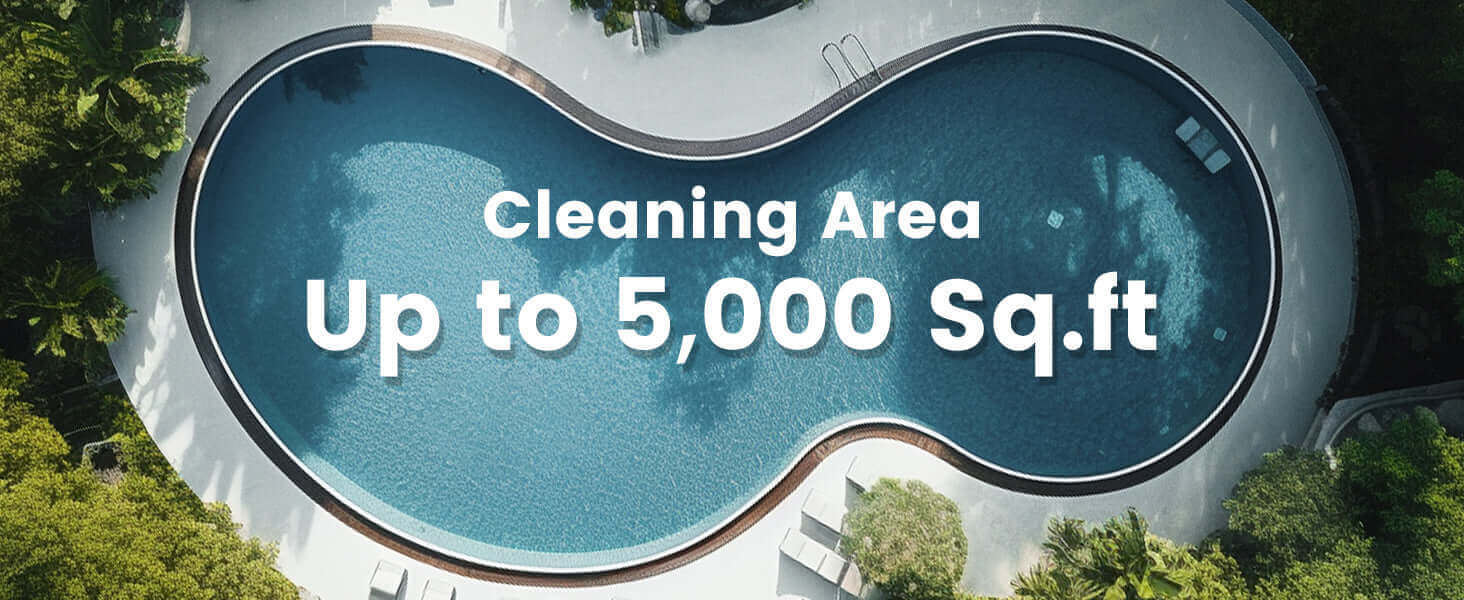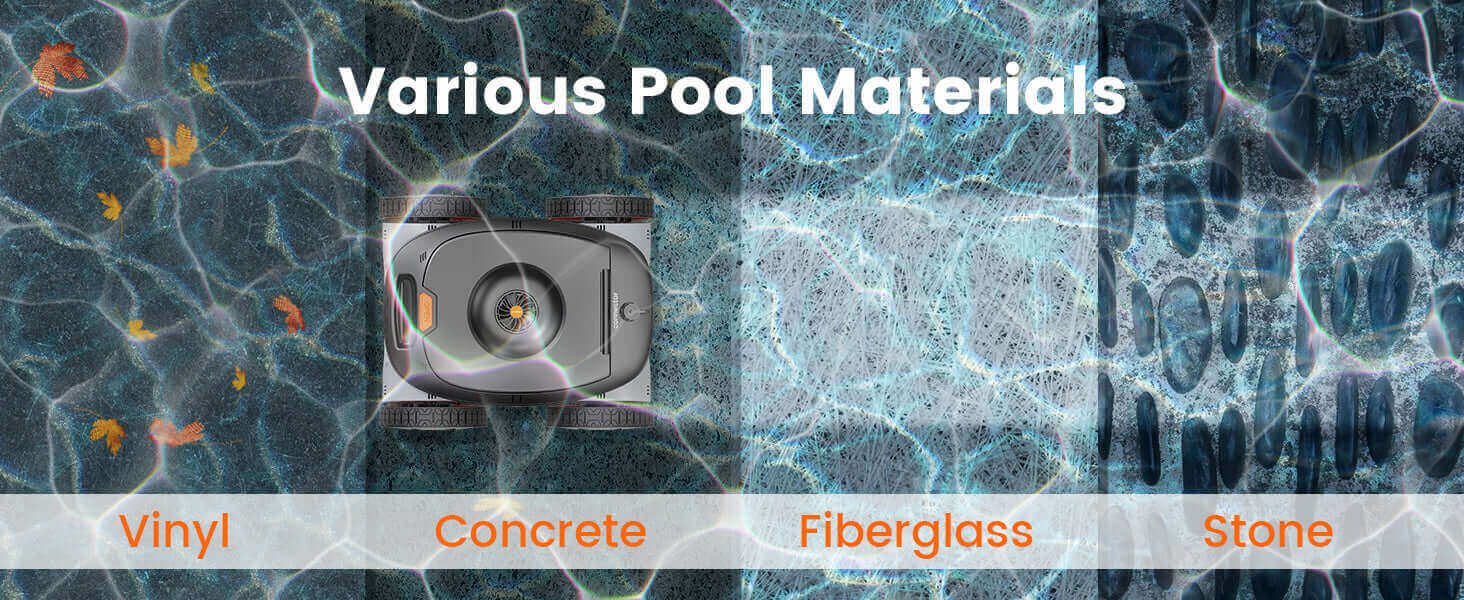Owning a pool is a luxury, but keeping it clean and pristine can often feel like a never-ending chore. Enter robotic pool cleaners—smart, automated devices that take the hassle out of pool maintenance. Whether you’re new to pool ownership or looking to optimize your cleaning routine, this guide will walk you through how to get the most out of your robotic pool cleaner, ensuring crystal-clear water with minimal effort.
1. Choose the Right Robotic Pool Cleaner for Your Needs
The first step in maximizing your robotic pool cleaner’s efficiency is selecting the right model for your pool. Not all robotic pool cleaners are made equal, and your choice depends on factors like pool size, shape, and the type of debris you typically encounter. Some models are better for larger pools, while others are specifically designed for smaller, above-ground options.
Pro Tip: Look for models that offer programmable cleaning schedules, different suction modes, and smart navigation features. These can help your robotic cleaner adapt to your specific pool environment, whether you have a lot of leaves, algae, or small debris.
2. Regularly Check Your Pool’s Water Chemistry
While your robotic pool cleaner is excellent at removing dirt and debris, it can’t address water chemistry. To ensure your cleaner operates efficiently, maintain your pool’s water balance. Poor water chemistry can cause dirt to stick to the pool walls or the cleaner’s filter, reducing its effectiveness.
Pro Tip: Regularly check your pool’s pH levels, chlorine, and alkalinity. Keep your pool’s water balanced to ensure debris is easily removed and your robotic cleaner’s filters don’t clog up too quickly.
3. Optimize Your Pool Cleaner’s Cleaning Cycle
Most robotic pool cleaners come with multiple cleaning cycle options, such as fast clean or deep clean. A fast clean mode might be suitable for routine maintenance, but if your pool has a lot of debris or algae buildup, use the deep-clean setting. Ensure that the cleaner’s cycle is set to the appropriate level for your pool’s current condition.
Pro Tip: Run your robotic cleaner when the pool is not in use—early mornings or late evenings are ideal times. This allows the device to work uninterrupted, without swimmers disturbing the process.
4. Place the Cleaner in the Right Pool Zones
Robotic pool cleaners typically work best when they have clear access to the entire pool. Some models are equipped with advanced navigation technology that allows them to map out the pool’s layout, ensuring full coverage. However, if your cleaner lacks this feature, manually place it in different zones of your pool to ensure it cleans all areas, including the walls and floor.
Pro Tip: Use a “spot clean” feature if your pool cleaner offers one. This feature targets specific areas with concentrated cleaning, helping to clear heavy debris or spots missed by the regular cleaning cycle.
5. Regularly Clean and Maintain the Robotic Cleaner
A key factor in ensuring long-lasting performance from your robotic pool cleaner is regular maintenance. Over time, the cleaner’s filters, brushes, and tracks can become clogged with debris. Make sure to rinse out the filters and brushes after each use. Periodically check for any tangled debris in the cleaner’s brushes or wheels, as this can affect its cleaning efficiency.
Pro Tip: Take apart the robotic cleaner every few weeks to thoroughly clean and inspect all moving parts. If you notice any worn-out parts, replace them promptly to avoid further damage and maintain optimal performance.
6. Use the Cleaner’s Smart Features to Your Advantage
Today’s robotic pool cleaners often come equipped with smart features, such as app connectivity, voice control, and even remote operation. If your model includes these, take full advantage of them to streamline your cleaning routine. Setting a cleaning schedule through an app allows your cleaner to run automatically, even when you’re not home.
Pro Tip: Check for firmware updates for your robotic cleaner, as manufacturers frequently release updates to enhance performance, add new features, and fix bugs. Stay on top of updates to ensure your cleaner works as efficiently as possible.
7. Store Your Robotic Pool Cleaner Properly
When the pool season ends or the device isn’t in use for extended periods, store it in a safe, dry place. Ensure the cleaner is completely dry before storing it to prevent mold and corrosion from developing in the unit. Also, avoid storing the cleaner directly on concrete or areas that could cause wear and tear on the cleaner’s components.
Pro Tip: If you live in a region with cold winters, consider storing your robotic pool cleaner indoors to protect it from freezing temperatures, which could damage the device’s electrical components.
8. Troubleshooting Common Issues
Sometimes, despite regular maintenance, you may encounter issues with your robotic pool cleaner. Common problems include poor suction, uneven cleaning, or the device getting stuck. When this happens, check for any blockages in the cleaner’s intake, inspect the brushes for wear, or ensure the wheels are rotating freely.
Pro Tip: If your robotic cleaner continues to have issues, consult the user manual for troubleshooting steps or contact customer support for assistance. Many models come with warranties that can cover repairs or replacements.
Conclusion: Make Pool Cleaning Effortless with Smart Maintenance
By understanding your robotic pool cleaner’s capabilities, optimizing your pool’s water chemistry, and maintaining the device regularly, you can extend its lifespan and ensure top-notch cleaning performance. With the right approach, your robotic cleaner can keep your pool looking pristine with minimal effort, leaving you more time to enjoy your pool rather than maintain it.




Leave a comment
This site is protected by hCaptcha and the hCaptcha Privacy Policy and Terms of Service apply.